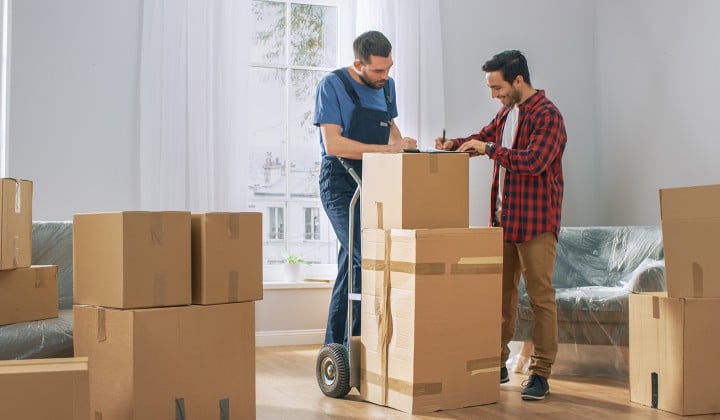
Moving to a new home is an exciting chapter in your life, but it can also be a stressful endeavor, especially when it comes to ensuring the safety of your belongings during the transition. The process of packing, transporting, and unpacking your possessions can be a daunting task. However, with the right strategies and precautions in place, you can minimize the risk of damage or loss and make your move a smooth and safe one.
1. Start with a Moving Plan
A successful move begins with a well-thought-out plan. Create a moving checklist that outlines all the tasks you need to complete before, during, and after the move. This plan will help you stay organized and ensure that you don’t forget any important steps.
2. Declutter and Downsize
Before you start packing, take the opportunity to declutter your home. Go through your belongings and decide what to keep, donate, sell, or discard. The fewer items you have to move, the easier and safer the process will be. Plus, you’ll save on packing materials and transportation costs.
3. Gather High-Quality Packing Supplies
Invest in good-quality packing supplies to protect your belongings during the move. This includes sturdy boxes in various sizes, packing tape, bubble wrap, packing paper, packing peanuts, markers, and labels. Don’t skimp on these items, as they are crucial for keeping your possessions safe.
4. Use Proper Packing Techniques
Proper packing techniques can make a significant difference in the safety of your items. Follow these guidelines:
- Wrap fragile items individually with bubble wrap or packing paper.
- Use specialized boxes for delicate items, such as dish barrels for kitchenware.
- Fill empty spaces in boxes with packing peanuts or crumpled paper to prevent shifting.
- Clearly label boxes as “Fragile” to alert movers to handle them with care.
5. Hire Professional Movers
Consider hiring professional movers to ensure the safety of your items. Experienced movers have the knowledge and equipment needed to protect your belongings during the move. They can handle heavy and delicate items with care, reducing the risk of damage.
6. Insure Your Belongings
Whether you hire professional movers or move yourself, consider purchasing moving insurance or checking your existing homeowner’s or renter’s insurance policy to ensure your belongings are protected during the move. Insurance provides an extra layer of security in case of unexpected accidents or damage.
7. Pack a Moving Essentials Box
Pack a separate box or bag with essentials you’ll need on the first day in your new home. This can include toiletries, a change of clothes, important documents, and basic kitchen items. Keep this box with you during the move to ensure easy access to essential items.
8. Label Boxes Clearly
Labeling your boxes is essential for a safe and organized move. Use a marker to write the contents of each box and its destination room. This will make unpacking much more manageable, and you’ll know which boxes require extra care.
9. Reinforce Boxes
To prevent boxes from breaking or collapsing, reinforce them with packing tape. Pay extra attention to the bottoms of boxes, as they bear the most weight during the move. Run tape along the seams and create a “T” shape for added strength.
10. Disassemble Furniture
If possible, disassemble large furniture items like bed frames and dining tables before moving. This not only makes them easier to transport but also reduces the risk of damage. Keep all hardware and assembly instructions in a labeled bag or box to ensure you can reassemble them at your new location.
11. Protect Your Mattresses and Furniture
Invest in mattress and furniture covers to protect these items from dust, dirt, and potential damage during the move. You can often find these covers at moving supply stores or online. Properly covering your furniture can also prevent fabric or leather from tearing.
12. Secure Fragile and Valuable Items
Items that are fragile or valuable require extra care:
- Fine China and Glassware: Wrap each piece individually in bubble wrap or packing paper. Use specialized boxes with dividers for extra protection.
- Electronics: If possible, pack electronics in their original boxes. If not, use padding and cushioning materials to protect them.
- Artwork and Mirrors: Use picture boxes or crates to protect framed artwork and mirrors. Add padding to prevent shifting during transit.
- Jewelry and Valuables: Keep valuable items with you during the move to prevent loss or theft.
13. Pack for Temperature Sensitivity
Consider the temperature conditions during your move:
- Electronics: Extreme temperatures can damage electronics. If you’re moving in hot weather, avoid leaving electronics in a hot vehicle for extended periods.
- Plants: Water your plants a few days before the move and pack them in sturdy boxes with air holes to prevent damage from temperature fluctuations.
- Perishables: Dispose of perishable items before the move to avoid spoilage.
14. Load and Unload Safely
On moving day, prioritize safety:
- Lift with your legs, not your back, to prevent injuries.
- Use proper lifting techniques, and ask for help with heavy items.
- Keep hallways and walkways clear to avoid tripping hazards.
15. Protect Against Rain and Weather
If there’s a chance of rain or adverse weather conditions during your move, take precautions. It’s best to use plastic covers or tarps to protect furniture and boxes from rain or moisture, and keep an eye on the weather forecast. Be prepared and open to delaying the move if necessary, as risk for collisions, damage and injury increases exponentially when the weather inhibits a driver’s ability to be safe on the road. If you do end up in a crash, an accident lawyer can help you navigate the complexities of liability and compensation.
16. Conduct a Final Inspection
Before leaving your old home and after arriving at your new one, conduct a final inspection of your items. Ensure that nothing is left behind, and check for any damage or missing items. Document any issues with photos and make a record of them.
17. Communicate with Your Movers
If you’ve hired professional movers, communicate openly with them throughout the process. Provide clear instructions about which items are fragile or require special handling. Address any concerns or questions you may have, ensuring that everyone is on the same page.
18. Keep Important Documents Secure
Place important documents such as passports, IDs, birth certificates, and financial records in a secure and easily accessible location. Consider keeping them with you during the move to prevent loss or damage.
19. Unpack Thoughtfully
When you arrive at your new home, unpack thoughtfully and carefully:
- Start with the essentials, such as setting up your bed and kitchen.
- Unpack room by room to stay organized.
- Dispose of packing materials responsibly, recycling cardboard and properly disposing of plastic and other waste.
Moving can be a complex and challenging process, but with the right strategies, you can keep all your items safe and ensure a smooth transition to your new home. Planning, organization, proper packing techniques, and hiring professionals when needed are all essential elements of a successful and secure move. By following these strategies, you can protect your belongings and make your move a positive experience. Remember, safety and preparation are key to a successful move.
We hope you found this blog post on Strategies to Keep All Your Items Safe While Moving, useful. Be sure to check out our post on Pro Packing Tips to Make Moving Easier for more great tips!
Have Experience in the Moving Industry? Want an Additional Income Stream? Work With All Around Moving!
Earn extra money and put your experience, moving relocation consultant, and drive to good use. Profit as a moving consultant. Click here to learn more.





